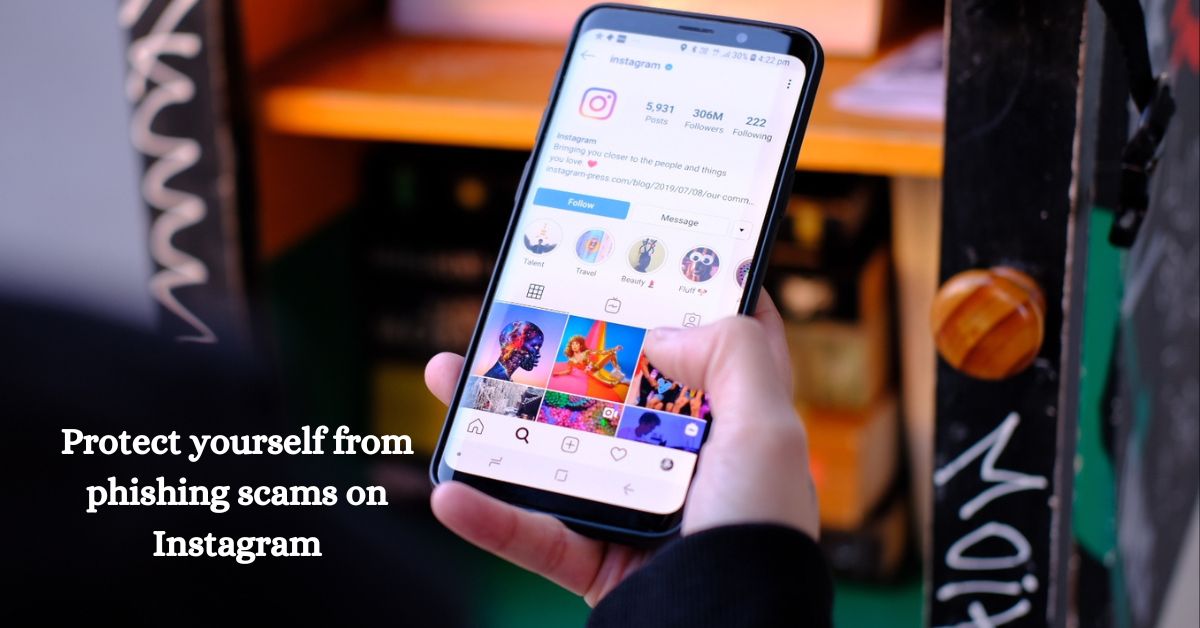How to protect yourself from phishing scams on Instagram. This lesson discusses phishing, a serious threat that can compromise your privacy and security. Instagram is not always immune from scammers who use various processes to lie to customers and gain access to their bills, potentially resulting in identity theft.
How to protect yourself from phishing scams on Instagram. Phishing is a deceptive practice of tricking people into revealing sensitive information. It is a serious risk that can compromise your privacy, security and online identity. Instagram, being one of the most popular social media structures. Is not proof against these risks. Scammers employ a variety of cunning tactics to mislead customers and gain unauthorized access to their bills. Potentially leading to identity theft, financial loss or exposure of personal data.
Here are some essential steps you can take to protect yourself:
Be careful with direct messages and feedback:
- Don’t click on suspicious hyperlinks: Scammers often send DMs or feedback with tempting links promising free items, gifts, or account verification. Avoid clicking on them, even if they come from legitimate sources like Instagram or well-known brands.
- Confirm the sender: If you receive a message from someone you don’t know, be careful. Take a look at their profile for signs of legitimacy, like confirmed badges (if relevant), honest content, and number of followers. If something feels wrong, don’t respond or interact.
- Don’t share personal data in any way: Scammers often try to entice you to reveal sensitive information like your password, credit card information, or Social Security amounts. Never share such statistics through DM or feedback. Don’t forget, Instagram will not ask for your password in any way through these channels.
Beware of 3rd-party apps and websites:
- Only download apps from professional stores: Avoid downloading apps from unknown sources or clicking on hyperlinks that promise to provide additional capabilities or capacity that are no longer available in the official Instagram app. Keep downloading apps from App Store or Google Play Store.
- Beware of “Free Followers” or “Likes” Scams: Websites or apps promising to increase your followers or likes are regularly scams. They may require you to log in with your Instagram credentials or perhaps install malware on your device. Stay away from these offers.
- Take a look at the validity of the Internet site: If you’re unsure about a website linked in a DM or comment. Manually type the Internet site address into your browser instead of clicking on the hyperlink. This protects you from being redirected to a malicious website disguised as a legitimate website.
Some standard security features:
- Allow 2-factor authentication (2FA): This adds an additional layer of security by requiring a code from your smartphone or electronic mail similar to your password to log in.
- Use strong passwords: Create an accurate and complex password to your Instagram account and avoid using the same password for other online services.
- Keep your app and tool software updated: Updates regularly include security patches. So make sure you’re using the latest versions of the Instagram app and your device’s operating system.
- Report suspicious activity: If you receive a suspicious account, DM, or comment, report it to Instagram immediately. This makes it easier for them to listen to music and protest against scammers.
Read This: Top 7 Social Media Optimization Tools in 2024

Karan Pratap is a tech enthusiast and writer with a Bachelor’s degree in Computer Science and over 4 years of experience in the technology sector. As the author at HorseWorldJournal.com, Karan delves into the latest tech news and trends, providing readers with insightful analysis and updates. His expertise covers a wide range of topics from emerging technologies to gadget reviews. Follow Karan on Instagram, YouTube, and Facebook for the latest in tech news and trends.

